The first of China’s new class of big-deck amphibious assault ships is rapidly taking shape and we can now get a much better look at the vessel’s twin-island configuration. The design choice is typically made to simplify air operations and is very likely another indicator of this class of vessels being tailored, at least in part, for going to sea with enhanced air wings that include larger types of drones.


Recent photos of the first of the Type 076 landing helicopter dock (LHD) ships — known in the West as the Yulan class — under construction at the yard on Changxing Island in Shanghai first reveal one island superstructure added to the deck, as of September 26, followed by another, installed as of September 28.
Update again on the Type 076: According to these new images, now already both island superstructures have been installed.
(Images via @垂直风行 from Weibo) pic.twitter.com/0zP2kUHicP
— @Rupprecht_A (@RupprechtDeino) September 28, 2024
Since then, more close-in shots have provided details of both island superstructures, which were still surrounded by scaffolding as of October 3.
The Type 076 is not the first aviation-optimized warship with twin islands. Previously, this kind of design has been chosen for the significantly larger British Queen Elizabeth class aircraft carriers, and there are suggestions that it might also be chosen for India’s future aircraft carrier Vishal. Closer in size to the Type 076 is the Italian Trieste, another LHD, which also has two islands.
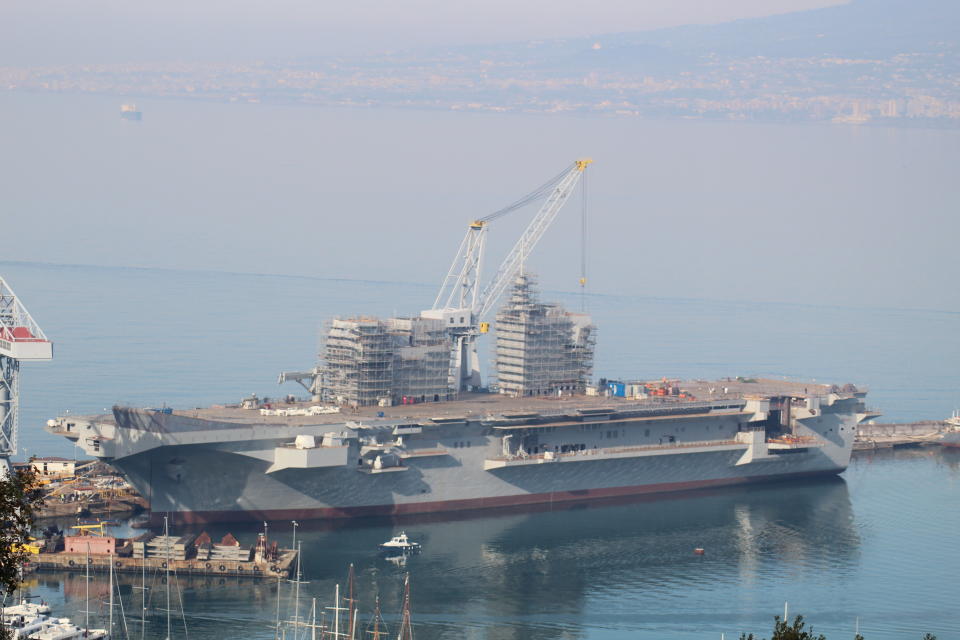
Notably, the twin-island configuration was chosen for these vessels since it makes aircraft operations more straightforward. With indications that the Type 076 will be heavily geared toward generating airpower — including in the form of heavier fixed-wing drones — this kind of design is especially relevant.
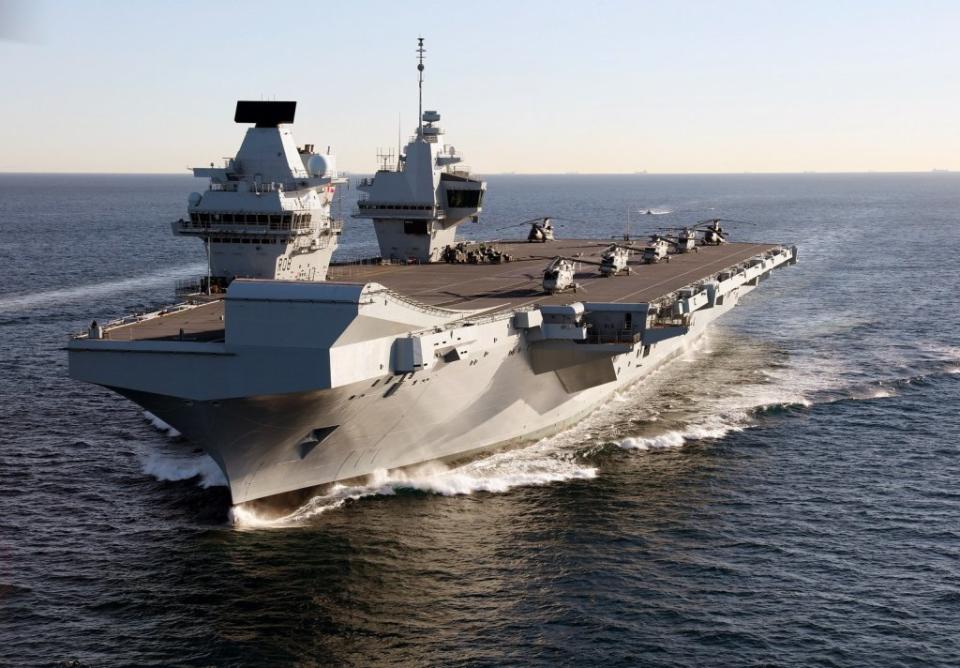
Simply put, having two islands means that one can be dedicated to navigation and other primarily ship-related taskings, while the other is used exclusively for controlling flight operations. When it comes to drones, the additional demands in terms of moving them around the deck remotely may also have helped reach this design decision.
As well as the twin islands, the Type 076 has other features that suggest the primacy of air operations in its mission spectrum.
Already obvious in previous imagery is the very large open flight deck, substantially wider than on other amphibious assault ships. There is also all but certain that a catapult is installed on the ship’s bow, which will likely be complemented by arresting gear to accommodate, in particular, stealthy uncrewed combat air vehicles (UCAV) and other larger fixed-wing drones.
Latest update on the first Type 076 LHD and now it is clear there is indeed only a single EMALS catapult.
(Image via Ricky Un on Facebook) pic.twitter.com/TV4E8udqCn
— @Rupprecht_A (@RupprechtDeino) June 9, 2024
Also speaking to the increased emphasis on air operations is the apparent space for an aircraft elevator on the port side of the stern end. This would be in addition to another large elevator at the center of the stern, as found on the Type 075.
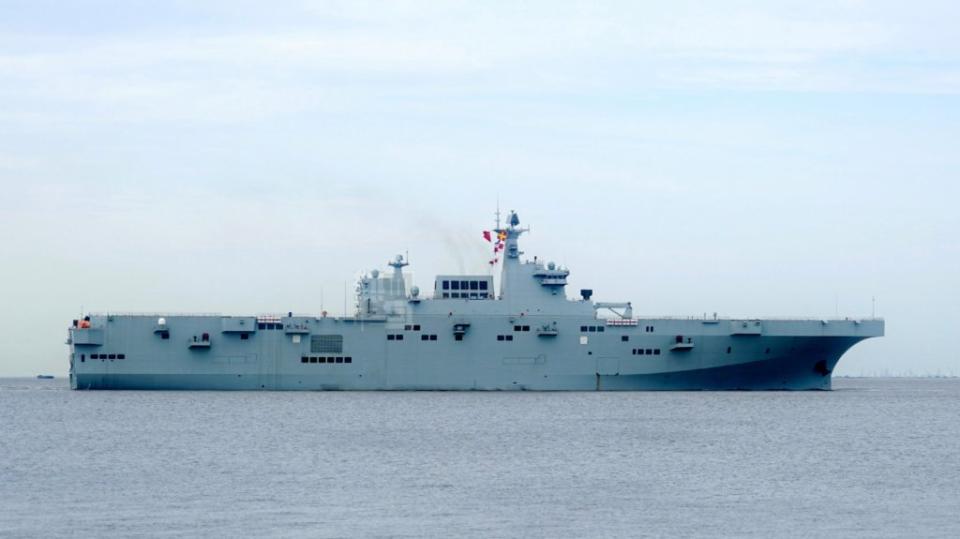
So far, there is no sign of a ‘ski jump’ takeoff ramp, though this could be potentially added in the future. However, it may be the case that the catapult — expected to be an electromagnetic aircraft launch system (EMALS) — would be sufficient for launching fixed-wing aircraft at higher operating weights. Using EMALS also has particular benefits for drone operations, these systems being better suited to launching smaller and lighter aircraft.
As expected, the Type 076 is therefore shaping up to be much more than a traditional amphibious assault ship, which also makes sense given its overall size: falling roughly between China’s current largest amphibious warship, the Type 075, and the country’s newest and largest aircraft carrier, the Fujian.
Based on previous TWZ analysis of satellite imagery, the Type 076 is roughly 864 feet long and 141 feet wide (263 and nearly 43 meters, respectively). By comparison, again based on satellite imagery, the Type 075 is 784 feet long and 105 feet wide (almost 239 and 32 meters), while the Fujian is 1,036 feet in length and 275 feet in width (close to 316 and almost 84 meters).
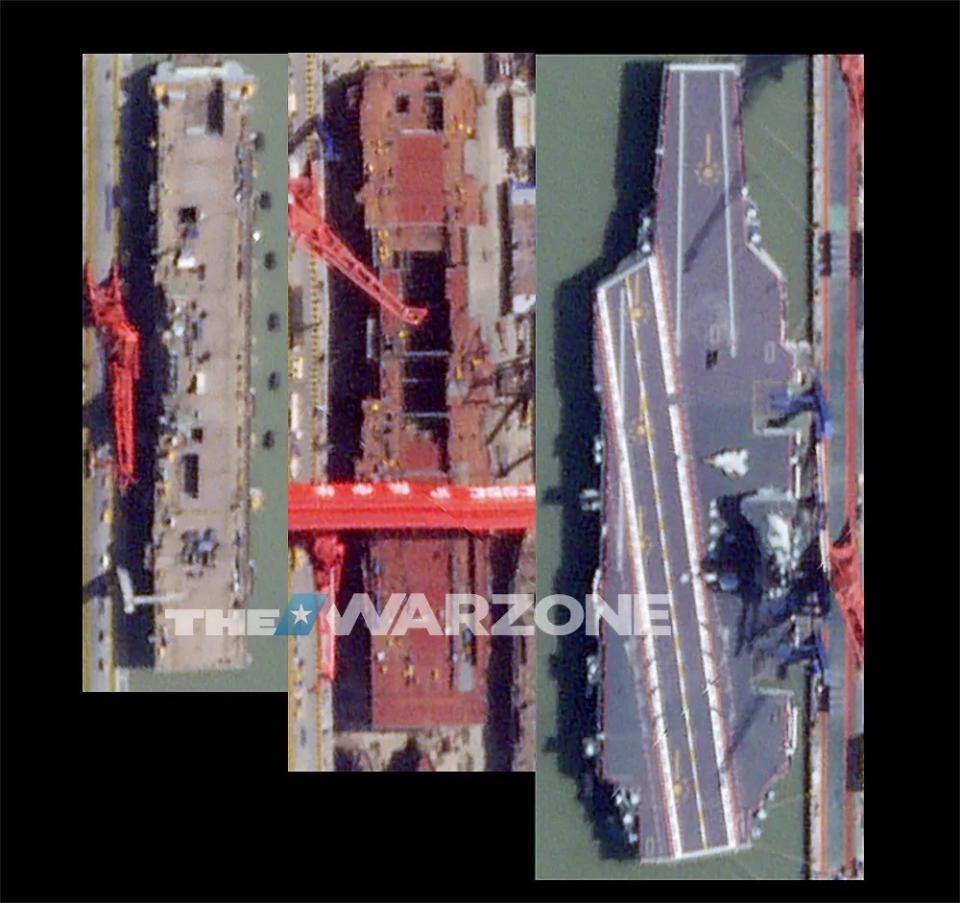
While it’s still the case that the Type 076 appears to be primarily intended to operate rotary-winged aircraft, like a more traditional amphibious assault ship, all signs currently point to drones being a major part of its air wing, too. Once again, the twin-island configuration should help make the integration of both crewed and uncrewed aircraft simpler.
There are other signs pointing to this, as well.
As we explored back in June, apparent mockups of China’s stealthy GJ-11 Sharp Sword UCAV have emerged at a test and/or training site on Changxing Island, a little over a mile from where the first Type 076 is being built. The facility includes a large apron and structures that may be intended to reflect the island or islands on a carrier or assault ship.
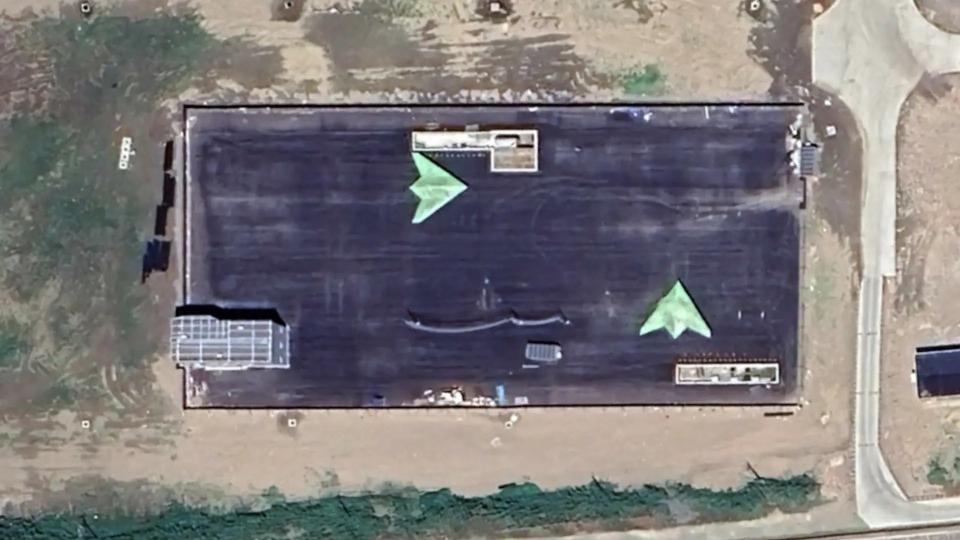
This adds to the weight of evidence suggesting that the GJ-11, or a related development, is set to be part of future air wings for the People’s Liberation Army Navy’s carriers and its more modern big-deck amphibious assault ships.
Provided the Type 076 class does eventually embark GJ-11s or similar drones, these might be used primarily for maritime strike and intelligence, surveillance, and reconnaissance (ISR). But as we have discussed in the past, there are many other potential mission sets, including electronic warfare systems, carrying directed-energy weapons, launching decoys, as well as more generally extending the targeting capabilities of friendly forces. Providing targeting data to anti-ship ballistic missiles, long-range anti-ship cruise missiles, as well as crewed strike aircraft, would be particularly relevant for the PLAN.

Reflecting broader developments within the PLAN’s shipbuilding program, the construction of the first Type 076 vessel has so far been proceeding at an impressive pace. We likely won’t have to wait long before more details of this fascinating — and very impressive — design begin to emerge, including a better idea of what kinds of aircraft, crewed or otherwise, it might operate.
Contact the author: thomas@thewarzone.com
